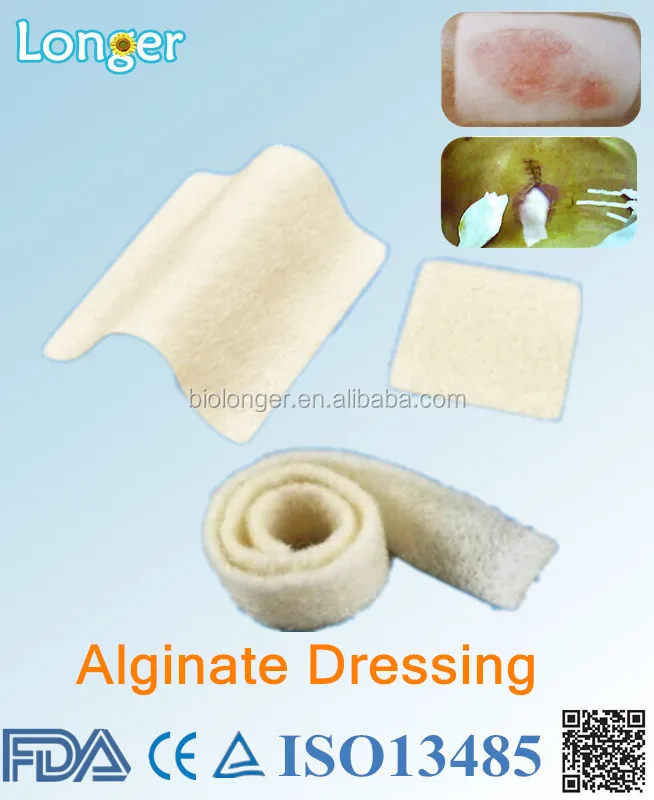When the insoluble calcium alginate of this type of dressing comes into contact with wound exudate a soluble sodium salt is produced.
Alginate wound dressing definition.
Alginate dressings also act as a haemostatic but caution is needed because blood clots can cause the dressing to adhere to the wound surface.
Alginate dressings maintain a physiologically moist microenvironment that promotes healing and the formation of granulation tissue.
Most of the time alginate dressings can be left unchanged for 5 7 days unless exudate capacity is reached.
Alginates can be rinsed away with saline irrigation so removal of the dressing does not interfere with healing granulation tissue.
An alginate dressing is a wound dressing which contains alginate fibers derived from seaweed.
Alginate dressings consist of the soft non woven fibers of a cellulose like polysaccharide derived from the calcium salts of seaweed.
With infected wounds the wound bed should be inspected daily.
The alginate fibers are easily biodegradable and offer a moist environment that speeds up the healing process and helps with the formation of granulation tissue.
Various types of wounds can affect bedridden patients those with diabetes or those with chronic venous insufficiency.
These dressings are used in the management of wounds which are producing a great deal of exudate such as deep sores.
An alginate wound dressing contains sodium and calcium derived from seaweed and come in the form of flat dressings.
Alginate dressings are extremely lightweight absorb many times their own weight form a gel like covering over the wound and maintain a moist environment.
Alginate dressings have proven to be successful in cleansing a variety of secretions and their high absorbing power is due to the hydrophilic gel formation which subsequently minimizes the bacterial contamination of the wound.
Alginate dressings are derived from seaweed made of soft non woven fibres and are available as pads ropes or ribbons.
They are available through some drug stores and also through catalogs which sell medical supplies and they may be applied by nurses or.
Alginate dressings can absorb up to 20 times their own weight for optimal wound healing.
26 they are biodegradable hydrophilic non adherent and highly absorbent.
In general using an alginate dressing is a straightforward process that follows the best practices of wound care.
Steps in using alginate dressing.
They are best used for wounds with significant exudate.
Alginate dressings are highly absorbent and suitable for use on exuding wounds and for the promotion of autolytic debridement of debris in very moist wounds.
These types of dressings are best used on wounds that have a large amount of exudate they may be used on full thickness burns surgical wounds split thickness graft donor sites mohs surgery defects refractory decubiti and.

